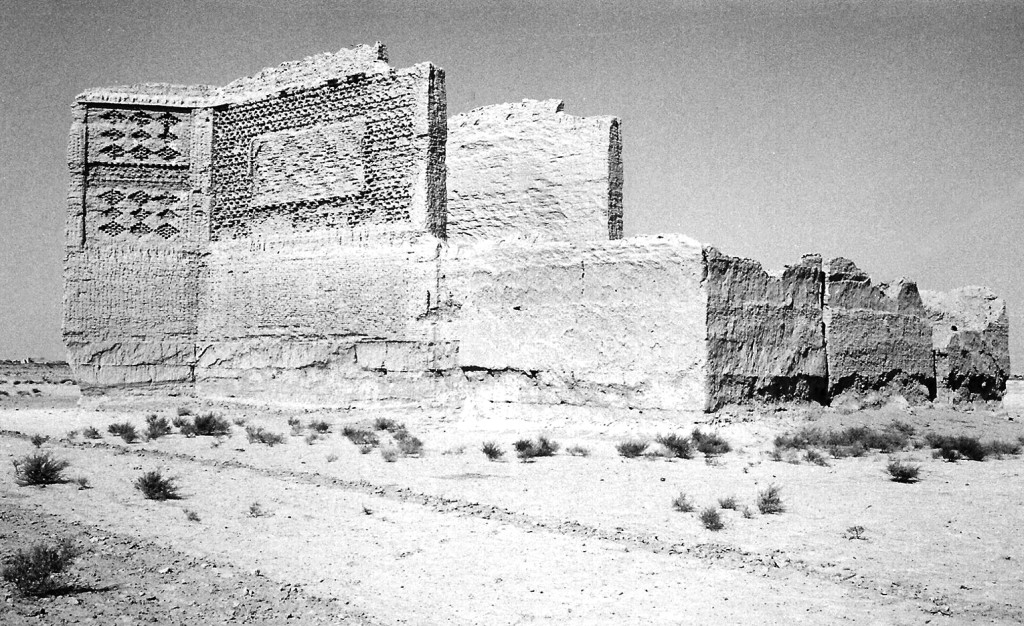Palangi
Gazetteer ID: 792
Latitude: 30.59957809 Longitude: 61.89526699
Enlarged satellite view
A large post-Timurid estate with highly decorated walls and a windmill still stands prominently at the edge of the modern village of Hauz. The names of the estate and the village are often conflated. Its excellent preservation and high degree of decoration led previous researchers to study the building, notably G.P. Tate and Klaus Fischer, who suggested it was built in the 17th century. Numerous Timurid estates within neighboring Hauz may suggest an earlier date for the establishment of this building. A leopard design in brick on one exterior wall gives the building its name. The western half of the building, the domestic area, is cruciform in plan with elaborate honeycombed brickwork on the interior. The eastern half holds a large windmill that presumably served as the power source for processing grains.



Hauz Village
The small modern village of Hauz near the fortress of Qala-i Fath is set among much larger and more elaborate ruined buildings from Timurid and post-Timurid times. Hauz has probably been the agricultural community associated with that fortress since Timurid times, possibly earlier based upon ceramic evidence we found there. In addition to the well-known Palangi estate, the village also has a large windmill and a well-preserved cistern, both probably several centuries old. Many of our Baluch excavation team came from Hauz so the village features prominently in our ethnographic study of the Helmand Baluch. We did not have time to document the various structures in the village.

Hauz Cistern
A large, standing, domed, baked brick building housing an operational cistern is located at the south edge of the village of Hauz. One previous researcher noted an inscription associating the building with a 17th century CE ruler of Sistan. The walls and ceiling of the cistern are decorated with animals, rosettes, and geometric and plant designs in relief.




